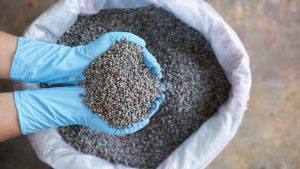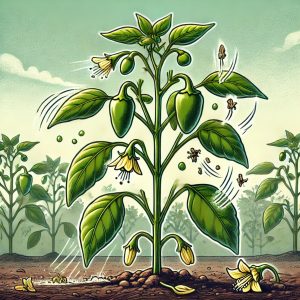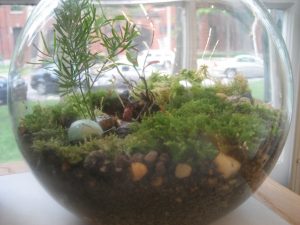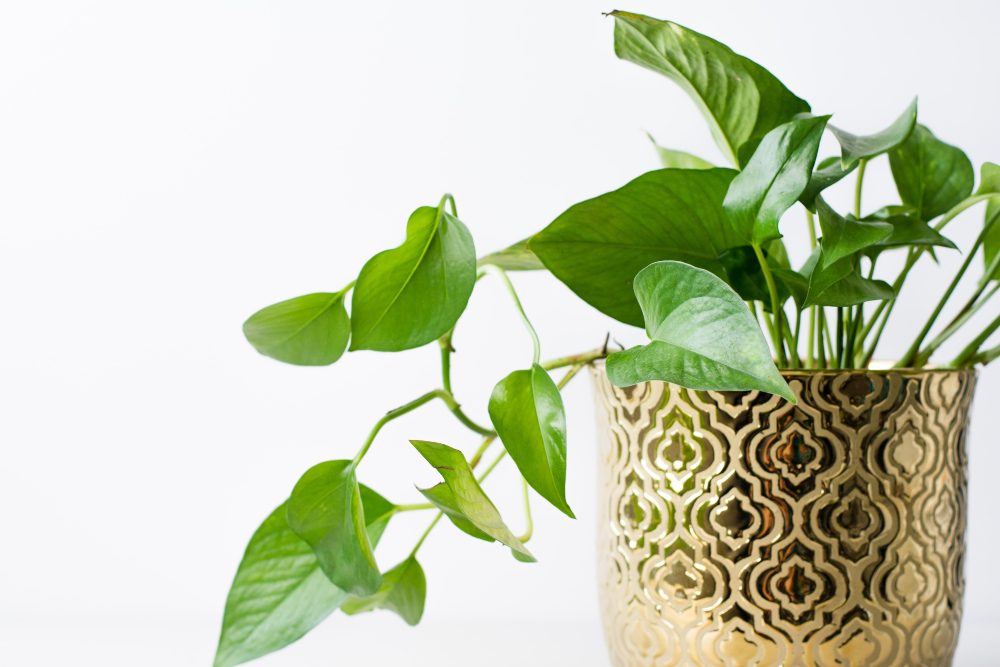
Finding the best indoor plants for low light conditions can be a challenge. Many people think that all plants need abundant sunshine to thrive. However, several varieties excel in low-light environments.
This article will explore the top picks for the best low-light indoor plants. We’ll guide you through selecting plants that survive and flourish in less sunny spaces. Our focus will be on aesthetically pleasing plants that are easy to care for.
Understanding Low Light Conditions
Contents
- 1 Understanding Low Light Conditions
- 2 Top Picks for Best Indoor Plants for Low Light
- 3 FAQ on the Best Indoor Plants in Low Light Conditions
- 3.1 Do the best indoor plants for low light need any natural light at all?
- 3.2 How often should I water the best indoor plants for low light?
- 3.3 Can the best indoor plants for low light also purify the air?
- 3.4 Are the best indoor plants for low light pet-friendly?
- 3.5 How do I know if my plant is getting too much light?
- 3.6 Can I use artificial light for the best indoor plants for low light?
- 3.7 How can I increase humidity for my best indoor plants for low light?
- 3.8 Is it necessary to fertilize the best indoor plants for low light?
- 3.9 Can I prune the best indoor plants for low light?
- 3.10 What is the best way to propagate the best indoor plants for low light?
- 4 Conclusion
When seeking the best indoor plants for low light, it’s crucial first to understand what ‘low light’ means in an indoor setting. Common light conditions are typically found in rooms with few windows or where daylight is obstructed.
These areas don’t receive direct sunlight but aren’t entirely dark either. It’s a common misconception that plants need direct sunlight to thrive. The best indoor plants for low light have adapted to grow in shaded or partially shaded natural environments.
Identifying Low Light Areas in Your Home
To successfully select the best indoor plants for low light, identify common light areas in your home. These are typically spaces that don’t get direct sunlight but aren’t entirely devoid of natural light.
Look for rooms with north-facing windows, which tend to receive less intense sunlight. Also, consider areas in your home shaded by trees or external buildings. Hallways and corners far from windows are other common low light spots.
Once you identify these areas, you can better understand what types of plants will thrive there. The best indoor plants for low light are usually those that naturally grow under the canopy of larger plants or on shady forest floors. They are adapted to survive with minimal glare.
By recognizing these specific spots in your home, you can ensure that you choose indoor plants for low light that are well-suited to your environment. This understanding will enhance the growth and health of the plants and contribute to the aesthetic and air quality of your indoor spaces.
How Plants Adapt to Low Light
The best indoor plants for low light are experts at utilizing whatever light is available. These plants have adapted to conduct photosynthesis efficiently, even in common light conditions. This efficiency is crucial for their survival and growth in shaded environments, whether in nature or indoors.
One common adaptation is the development of larger, broader leaves. These expanded leaves provide a greater surface area to absorb more light, making them one of the best indoor plants for low light. The larger leaves capture even the faintest light, essential for their growth in common light areas.
Some of the best indoor plants for low light can even thrive under artificial light. This ability is particularly beneficial in modern indoor settings with limited natural light. These plants can grow in office environments or homes that rely on artificial lighting, making them versatile and ideal as plants for low light.
This remarkable adaptation to low light conditions makes these plants not just survivors but also perfect candidates for enhancing indoor spaces. Their ability to thrive in less-than-ideal light conditions makes them a top choice for bringing greenery into various indoor environments.
Top Picks for Best Indoor Plants for Low Light
Choosing the right plants can transform low-lit areas of your home or office into vibrant spaces. The best indoor plants for low light are adaptable to dimmer environments and bring a touch of nature indoors.
These plants are ideal for enhancing spaces with limited natural light. Here, we’ll introduce our top picks for the best indoor plants for low light. Each plant has unique characteristics that make it suited for low-light conditions.
Peace Lily
The Peace Lily stands out as one of the best indoor plants for low light. This elegant plant is beautiful and remarkably adaptable to low-light conditions.
Ideal for Low Light Areas
Peace Lilies are renowned for their ability to thrive in low-light environments. This makes them an excellent choice for rooms with minimal natural light. They are a top pick for the best indoor plants for low light because of their resilience and adaptability.
Care and Maintenance
Caring for a Peace Lily is straightforward. They require minimal watering, only needing moisture when the soil feels dry. Overwatering can harm them, so it is important to let the soil dry out between waterings. They also benefit from occasional wiping of their leaves to remove dust.
Air Purifying Qualities
Apart from being one of the best indoor plants for low light, Peace Lilies are known for their air-purifying abilities. They can help remove toxins from the air, making them a healthy addition to any indoor space.
With its lush green leaves and white blooms, the Peace Lily is a visually striking plant that brings life to low-light corners of your home or office. Its low maintenance and air-purifying qualities make it a top choice among the best indoor plants for low light.
ZZ Plant
The ZZ Plant, also known as Zamioculcas zamiifolia, is one of the best indoor plants for low light. This plant is known for its durability and ability to thrive in less-than-ideal lighting conditions.
Thriving in Low Light
The ZZ Plant is an exceptional choice for areas with low natural light. It’s one of the best indoor plants for low light due to its ability to adapt and grow in environments where other plants might struggle. This resilience makes it perfect for offices and homes without large windows or limited daylight.
Easy Care and Maintenance
One of the reasons the ZZ Plant is among the best indoor plants for low light is its low-maintenance nature. It requires infrequent watering, only needing hydration when the soil is arid. This plant is also resistant to pests and diseases, making it a hassle-free addition to any space.
Aesthetic and Durability
The ZZ Plant features shiny, dark green leaves that can add a touch of elegance to any room. Its ability to withstand periods of neglect without losing its charm makes it an excellent choice for busy plant owners. This durability and aesthetic appeal solidify it as one of the best indoor plants for low light.
The ZZ Plant is not just attractive; it’s a practical choice for those looking for the best indoor plants for low light. Its ease of care, resilience, and striking appearance make it a favorite for enhancing low-light areas in homes and offices.
Snake Plant
The Snake Plant, scientifically known as Sansevieria, is widely celebrated as one of the best indoor plants for low light. Its striking appearance and resilience make it a popular choice for indoor spaces.
Excelling in Low Light Conditions
Snake Plants are ideal for low light areas in homes and offices. They are renowned for their ability to thrive in environments with minimal light. This quality places them among the best indoor plants for low light, suitable for spaces where most plants would not survive.
Minimal Care Requirements
The care routine for a Snake Plant is simple, contributing to its status as one of the best indoor plants for low light. It requires minimal watering, with the soil needing to dry out completely between waterings. Overwatering can lead to root rot, so it’s essential to water sparingly. This plant is also tolerant of a wide range of temperatures and humidity levels, adding to its low-maintenance profile.

Air Purification and Aesthetic Appeal
Besides being a top pick among the best indoor plants for low light, the Snake Plant is known for its air-purifying properties. It can filter out toxins from the air, improving indoor air quality. Aesthetically, its tall, upright leaves with unique patterning make it a stylish addition to any room.
The Snake Plant is not just a resilient choice for low-light areas; it’s also a practical one. Its ease of care, air-purifying capabilities, and striking design make it stand out among the best indoor plants for low light. Whether in a home or an office, the Snake Plant can bring beauty and health benefits to any low-light space.
Spider Plant
The Spider Plant, also known as Chlorophytum comosum, is popular among the best indoor plants for low light. It’s celebrated for its adaptability and charming appearance.
Thriving in Low Light Conditions
Spider Plants are well-suited for low light areas in homes and offices. They are capable of growing in a variety of lighting conditions, including low light. This adaptability makes them one of the best indoor plants for low light, especially for those new to plant care.
Easy to Care For
Caring for a Spider Plant is straightforward, contributing to its reputation as one of the best indoor plants for low light. It prefers well-drained soil and moderate watering. The key is to let the soil dry out a bit between waterings. It’s also tolerant of occasional neglect, making it an excellent plant for beginners or busy individuals.
Air Purifying and Aesthetically Pleasing
The Spider Plant is one of the best indoor plants for low light and an excellent air purifier. It helps remove pollutants from indoor air, creating a healthier living environment. Aesthetically, its arching leaves and baby plantlets, or ‘spiderettes,’ hanging from the mother plant, add a unique charm to any space.
The Spider Plant’s ease of care, ability to thrive in low light conditions, and air-purifying qualities make it an exceptional choice. Its distinctive appearance adds a decorative touch, making it a favorite among the best indoor plants for low light. The Spider Plant can bring life and clean air to your space, whether in a shaded corner or a busy office.
Pothos
Pothos, often called Devil’s Ivy, stands out as one of the best indoor low-light plants. Its adaptability and striking foliage make it a favorite for indoor gardeners.
Perfect for Low Light Environments
Pothos plants are well-known for their tolerance of low light conditions. They can thrive in areas where other plants might struggle, making them a top choice among the best indoor plants for low light. This quality allows them to be placed in less sunny areas of homes and offices, where they continue to grow and add greenery.
Low Maintenance Care
One of the reasons Pothos is considered one of the best indoor plants for low light is its minimal care requirements. These plants prefer their soil to be allowed to dry out between waterings, preventing root rot. They are also not overly sensitive to occasional neglect, ideal for those with busy schedules or new to plant care.
Versatile and Decorative
Pothos plants are not only practical but also aesthetically pleasing. They feature heart-shaped leaves that come in a variety of patterns and colors. Their trailing vines can be left to hang or trained to climb, offering various styling options. This versatility and decorative appeal make them an excellent choice among the best indoor plants for low light.
Pothos plants are an all-around excellent choice for bringing life to low-light areas. Their ease of care, ability to adapt to less sunny environments, and decorative nature solidify their position as one of the best indoor plants for low light. Whether you’re a seasoned plant lover or new to indoor gardening, Pothos can be a delightful addition to your space.
Philodendron
Philodendron is one of the best indoor plants for low light. It’s popular in many homes and offices because of its versatility and lush foliage.
Adaptability to Low Light
Philodendrons excel in low light conditions, which makes them an ideal choice among the best indoor plants for low light. They can flourish in spaces that don’t receive a lot of natural sunlight, adapting well to the available light. This characteristic allows them to be placed in a variety of indoor settings.
Simple Care Requirements
The care routine for Philodendrons contributes to their status as one of the best indoor plants for low light. They thrive with moderate watering, requiring their soil to be kept consistently moist but not waterlogged. They also forgive occasional neglect, making them suitable for busy plant owners or beginners.
Aesthetic Appeal
Philodendrons come in various shapes and sizes, ranging from large, split-leaf varieties to smaller, heart-shaped ones. Their diverse leaf shapes and vibrant green color make them a visually appealing choice among the best indoor plants for low light. They can add a tropical feel to any room, enhancing its natural beauty.
Philodendrons are a top choice for adding greenery to low-light areas. Their adaptability, ease of care, and stunning appearance make them one of the best indoor plants for low light, perfect for enhancing any indoor environment with a touch of nature.
Calathea
Calathea, with its unique and vibrant foliage, is celebrated as one of the best indoor plants for low light. This plant is known for its distinctive leaf patterns and colors, making it a favorite among enthusiasts.
Flourishing in Low Light
Calatheas are perfect for low light conditions, thriving in spaces without direct sunlight. This characteristic places them among the best indoor plants for low light. Their natural habitat is under the dense canopies of tropical forests, where sunlight is filtered through layers of foliage. This makes them well-adapted to the diffused light found in many indoor environments.
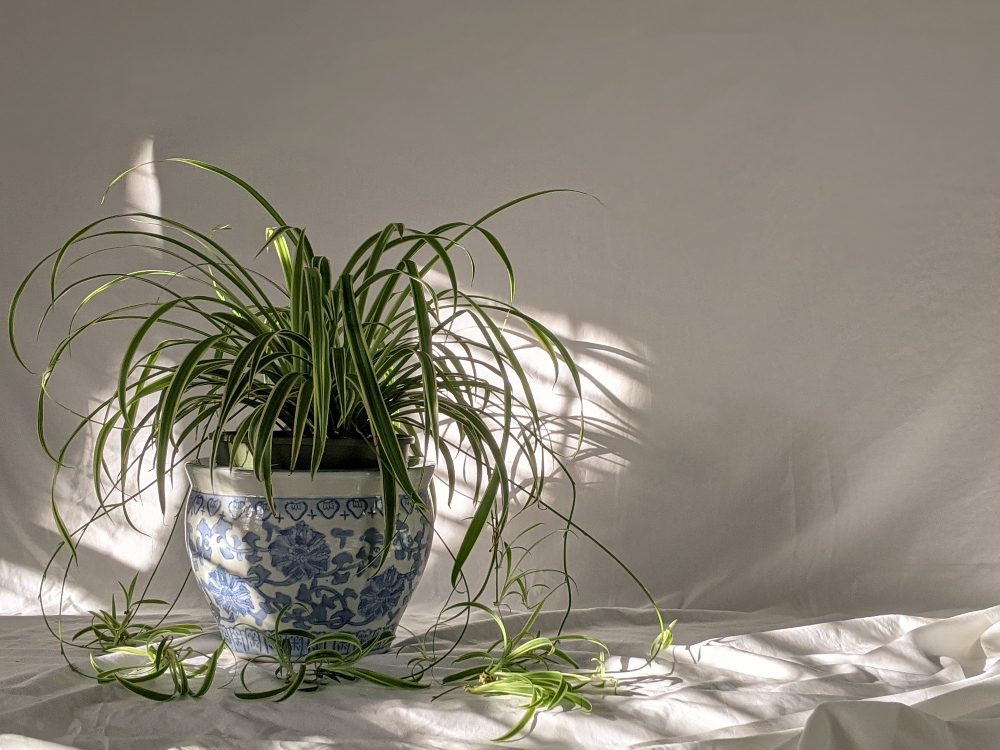
Care and Attention
While Calatheas are one of the best indoor plants for low light, they require a bit more attention than other low-light plants. They prefer consistent moisture in their soil and high humidity. These plants also benefit from regular misting and being kept away from cold drafts. Their leaves can be sensitive, so gentle care is recommended.
Decorative and Expressive Leaves
Their stunning leaves set Calatheas apart and make them one of the best indoor plants for low light. They feature intricate patterns and colors, ranging from deep greens to purples, and even have a unique feature where their leaves move, opening and closing from day to night. This dynamic movement and its decorative appeal add an interesting and lively element to any indoor space.
Calatheas are a fantastic choice for adding elegance and color to low-light areas. Their need for a bit more care is well worth the effort, given their stunning appearance. Their adaptability to low light and decorative qualities make them an excellent choice among the best indoor plants for low light, perfect for anyone looking to add a touch of vibrancy to their indoor garden.
Dracaena
Dracaena is widely recognized as one of the best low-light indoor plants. Its resilience and striking appearance make it popular for enhancing indoor spaces with minimal light.
Ideal for Low-Light Conditions
Dracaenas are exceptionally adaptable to low light areas, making them a top contender among the best indoor plants for low light. They are well-suited for places in homes and offices that don’t receive ample sunlight. This adaptability allows them to thrive in environments where other plants might struggle.
Low Maintenance and Care
One of the appealing aspects of Dracaena as one of the best indoor plants for low light is its low-maintenance nature. These plants do not require frequent watering, making them ideal for those who want a hassle-free plant. Letting the soil dry out between waterings is important to prevent root rot. Dracaenas are also relatively resistant to pests, further easing their care.
Aesthetic Value
Dracaenas come in various species, each with its unique leaf patterns and colors. From striped leaves to vibrant greens, they can add an artistic touch to any indoor space. Their vertical growth and sculptural leaves make them a visually appealing choice among the best indoor plants for low light, adding height and texture to indoor landscapes.
Dracaena is an excellent choice for anyone looking to add a resilient and decorative plant to their low-light areas. Their ease of care, ability to adapt to low light, and aesthetic appeal make them one of the indoor plants for low light, perfect for enhancing various indoor settings.
English Ivy
English Ivy, or Hedera helix, is highly valued as one of the best indoor plants for low light. Its classic and versatile appearance makes it a timeless choice for bringing greenery into dimly lit indoor areas.
Thriving in Low Light
English Ivy is renowned for its ability to grow in low light conditions, solidifying its place among the best indoor plants for low light. It can flourish in shaded areas of your home or office, where other plants might not survive. This adaptability is particularly beneficial for spaces with limited natural light.
Care and Growth
Caring for English Ivy is straightforward, making it a great choice among the best indoor plants for low light. It prefers its soil to be kept evenly moist but not waterlogged. Overwatering should be avoided to prevent root problems. English Ivy also thrives in cooler temperatures and with moderate humidity. Regular pruning can encourage fuller growth and maintain its shape.
Versatile in Styling
English Ivy is not just one of the best indoor plants for low light; it’s also incredibly versatile in styling. It can be grown as a trailing plant, cascading over the sides of pots, or trained to climb trellises and walls. This flexibility allows it to be used in various decorative ways, enhancing the aesthetic of any room.
English Ivy is a superb choice for those looking to add a touch of classic elegance to low-light areas. Its ability to thrive in shaded environments, ease of care, and versatile styling options make it one of the great indoor plants for low light. It’s ideal for anyone wanting to bring the beauty of nature into their indoor spaces with minimal fuss.
Maidenhair Fern
Maidenhair Fern, known scientifically as Adiantum, is esteemed as one of the best indoor plants for low light. Its delicate, feathery fronds bring a unique softness and elegance to indoor spaces.
Suitable for Gentle Light Conditions
Maidenhair Fern thrives in gentle, low light environments, making it a perfect addition to the list of the best indoor plants for low light. It’s ideal for areas that receive soft, natural light, avoiding direct sunlight, which can scorch its tender leaves. This preference for subdued lighting makes it a great choice for less sunny spots in homes and offices.
Attention to Moisture and Humidity
Caring for a Maidenhair Fern, while slightly more demanding, is rewarding. It’s among the best indoor plants for low light that require consistent moisture. The soil should be kept lightly moist but not soggy. Maidenhair Ferns also love high humidity, so regular misting or a humidifier can help them thrive. Their fronds can dry out quickly, so ensuring adequate humidity is key.
Aesthetic Elegance
The delicate and intricate fronds of the Maidenhair Fern make it a visually appealing choice among the best indoor plants for low light. Its fine, lacy leaves add a touch of elegance and sophistication to any space. This plant is perfect for adding greenery without overwhelming a room.
The Maidenhair Fern is an excellent option for those looking for a plant that flourishes in low light while adding a unique aesthetic touch. Its need for consistent moisture and high humidity is well worth the effort for the beauty it brings. As one of the best indoor plants for low light, it offers a delicate elegance unmatched by other indoor plants.
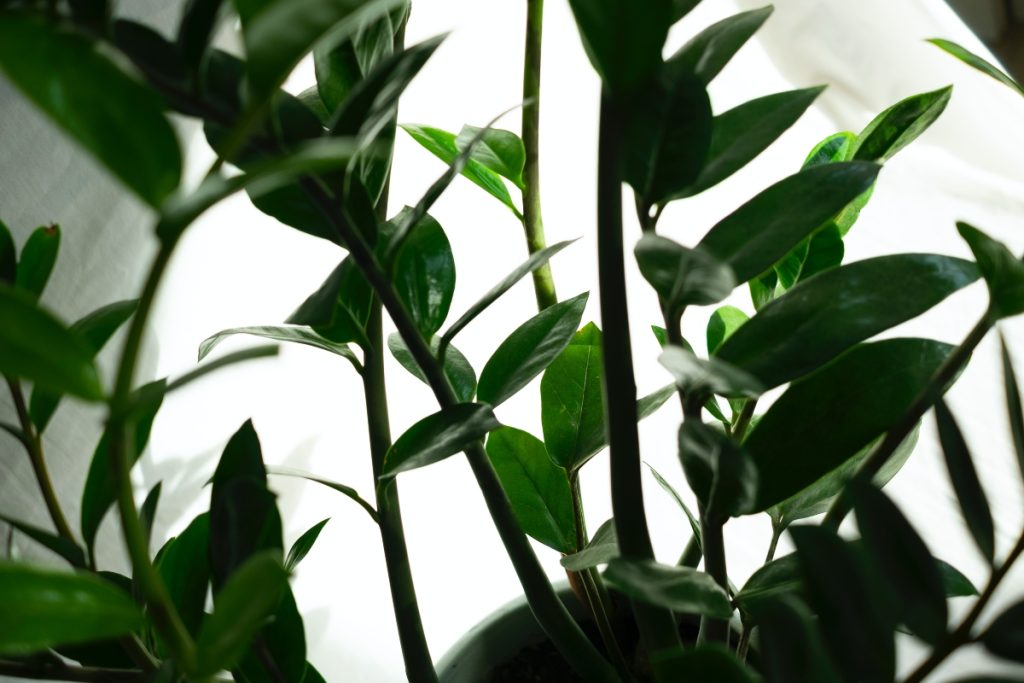
FAQ on the Best Indoor Plants in Low Light Conditions
Do the best indoor plants for low light need any natural light at all?
Even the best indoor plants for low light require some natural light. They thrive in indirect, filtered, or artificial light. Complete darkness is not suitable for any plant.
How often should I water the best indoor plants for low light?
The watering needs vary by plant, but generally, these plants require less frequent watering. It’s best to check the soil moisture and water only when the top inch of soil feels dry.
Can the best indoor plants for low light also purify the air?
Yes, many of the best indoor plants for low light, like Peace Lilies and Snake Plants, are known for their air-purifying qualities. They help remove toxins from the air.
Are the best indoor plants for low light pet-friendly?
Some, like the Spider Plant, are pet-friendly, while others, like the Peace Lily, can be toxic to pets. It’s important to research each plant’s pet safety if you have pets.
How do I know if my plant is getting too much light?
Signs that a plant is getting too much light include yellowing or crispy leaves. If you notice these signs, move the plant to a shadier spot.
Can I use artificial light for the best indoor plants for low light?
Many low-light plants can grow under artificial light, such as fluorescent lights, making them suitable for rooms with little to no natural light.
How can I increase humidity for my best indoor plants for low light?
You can increase humidity by misting the plants, placing a humidifier nearby, or keeping a water tray near the plant.
Is it necessary to fertilize the best indoor plants for low light?
Yes, but fertilization needs are usually lower than plants in bright light. Use a balanced, water-soluble fertilizer sparingly during the growing season.
Can I prune the best indoor plants for low light?
Pruning can help maintain shape and size, encourage fuller growth, and remove dead or yellowing leaves.
What is the best way to propagate the best indoor plants for low light?
Many of these plants can be easily propagated through cuttings or division. The method depends on the type of plant.
Conclusion
the best indoor plants for low light offer a fantastic way to enhance indoor spaces with natural beauty. These plants adapt well to low light conditions and contribute to improved air quality and aesthetic appeal. A low-light plant can thrive in that space whether you have a shady corner in your home or a dimly lit office.

